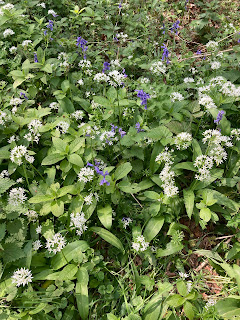Ladybirds
Tiny and adorable, ladybirds are awesome minibeasts. They belong to the insect order Coleoptera, or beetles, and have hard shell-like wing cases known as elytra. Ladybirds are a family of beetles called Coccinellidae, which contains over 6000 described species, and are found on every continent except Antarctica. They are mostly carnivorous, eating other insects such as aphids. This makes them a crucial ally when it comes to growing plants, and they are used in some cases as a natural pest control by farmers.
A close-up of a Harlequin ladybird (Harmonia axyridis), an invasive ladybird species in the UK.
Some ladybirds can be more destructive than beneficial, like the Harlequin ladybird which arrived in the UK from Asia in 2004, and is now widespread. It has been outcompeting our native species of ladybirds for resources such as food, and has can also predate their eggs and larvae. It is faster at reproducing than our native ladybirds too, meaning the population can grow rapidly and overwhelm other ladybird species.
Harlequin ladybirds can be deceptive too, they have a wide range of colours, known as polymorphism. This ranges from forms like the spotty one depicted above, to the melanistic (dark) form which is black with just 2 red spots. This makes them difficult to recognise and distinguish from the native species, so removing them is challenging.
A cluster of two 7-spot ladybirds (Coccinella septempunctata) and a Pine ladybird (Exochomus quadripustulatus)- both native species.
The name 'ladybird' comes from the saying "Our Lady's Birds", "Our Lady" being Jesus' mother Mary, who was frequently drawn wearing a red cloak, leading to the family being named after her, as many ladybirds are red, or have red spots. The scientific family name Coccinellidae comes from the Latin coccineus, meaning scarlet. Ladybirds' colouration typically serves as a warning to predators that they are unpleasant to eat, but can also be used for camouflage, heat regulation and attracting mates.
Ladybirds have an additional defence system to their warning colours- they can secrete a foul-tasting fluid from their knee joints when disturbed. This acts as a warning of what is to come should a predator eat them.

A close-up of a Larch ladybird (Aphidecta obliterata), which has unusually plain colouration for a ladybird!
Similarly to butterflies, Ladybirds undergo metamorphosis from their larval to their adult form. As a larva they take on a more caterpillar-like form, long and squishy, without wings or a hardened exoskeleton. They then pupate and emerge as the fully-formed adult.

.jpg)
.jpg)




Comments
Post a Comment